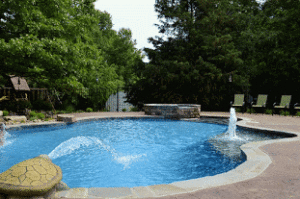 All eyes were on the pool recently for swimming’s 2009 World Championships in Rome. As a former competitive swimmer (though I was a dog-paddler compared to the likes of Michael Phelps and Ariana Kukors), these events hold a special place in my heart, and I managed to catch a few exciting moments in the competition.
All eyes were on the pool recently for swimming’s 2009 World Championships in Rome. As a former competitive swimmer (though I was a dog-paddler compared to the likes of Michael Phelps and Ariana Kukors), these events hold a special place in my heart, and I managed to catch a few exciting moments in the competition.
I’m no longer involved in the world of swimming, but I can only imagine that interest in the sport has skyrocketed since last year’s thrilling Olympics in Beijing. Maybe you or your children were inspired to get serious about swimming; maybe you’ve even decided to install a pool at your home.
While most home pools aren’t as large as competitive swimming pools, they can still provide a great way to exercise, have fun, and cool off in the hot weather. Home pools do require maintenance, however, and most require heating to keep them comfortable. Heating a pool can use a lot of energy and be an expensive prospect, but you can take some steps to improve your pool’s energy efficiency.
- Use a pool cover when your pool is not in use to reduce water loss through evaporation and save up to 50%–70% on your pool heating costs.
- Determine the best temperature for your pool to ensure you are operating your pool for maximum efficiency. Most pools are kept at 78°F to 82°F; each degree rise in temperature will cost 10%–30% more in energy costs, depending on your location.
- Install an efficient swimming pool heater. Learn your options and estimate the costs for gas, heat pump, or solar pool heaters.
- Install an energy-saving pool pump and operate it efficiently.
Whether you have your sights on an Olympic medal or simply like to take a dip in the backyard now and then, improving your pool’s efficiency will help keep those expenses down. And wouldn’t you rather worry about perfecting your backstroke?
